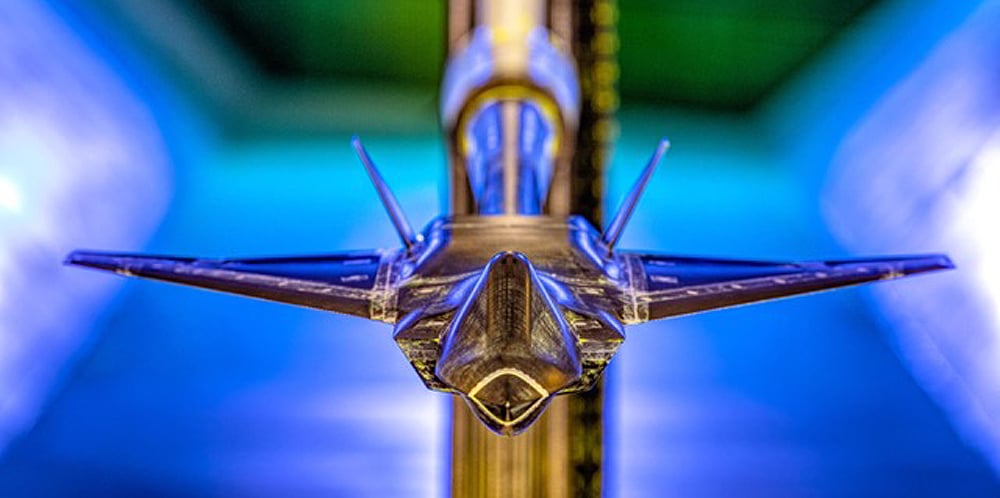Click Here to View This Page on Production Frontend
Click Here to Export Node Content
Click Here to View Printer-Friendly Version (Raw Backend)
Note: front-end display has links to styled print versions.
Content Node ID: 402801
Team Tempest has provided a further glimpse into the UK’s Future Combat Air System (FCAS) program, two years after its unveiling at the Farnborough Air Show. In an online media briefing, the industrial partners within the team outlined the financial, industrial and employment benefits that will be generated by the program, and that have already been leveraged in the run-up to submitting the outline business case proposal that it hopes will unlock further funding. Both Italy and Sweden are partners in the UK program.
The Tempest name is applied to both the BAE Systems-led team working on the FCAS, and also to the manned aircraft that is expected to lie at the heart of what will be a system of systems, consisting of crewed and uncrewed platforms, weapons, sensors, and other force elements.
“The future of air operations will not be about groups of individual aircraft flying individual missions in a warfighting posture,” said Leonardo’s Director of Major Air Programmes, Iain Bancroft, “The future of air operations will be about rapid and large-scale information exchange across a network of distributed capabilities, on an almost constant basis, within the air domain, and across all other domains, such as land, sea, and space. This system of systems model underpins the Tempest concept and requires a completely new approach.”
The team does expect a manned aircraft to form a key part of the system of systems, but Michael Christie, BAE Systems Director of FCAS, and the senior representative on Team Tempest, cautioned that the resulting fighter “may not look like the concept aircraft unveiled in 2018.” However, it will be some time before anyone sees the final aircraft design.
The U.S. is already flying what Will Roper, the Assistant Secretary of the Air Force for Acquisitions, Technology, and Logistics, called a full-scale flight demonstrator for its planned next-generation fighter (known as NGAD, or Next Generation Air Dominance), while the French and German governments have already launched the demonstrator phase of their FCAS and aim to begin flight tests in 2026.
By contrast, Team Tempest is in no rush to fly a demonstrator, or even to lock down the design. “The sooner you lock down the design, the sooner it’s obsolete,” observed Andrew Kennedy, Strategic Campaigns Director for BAE Systems Air.
“Traditionally, the capabilities we could bring to the battlespace were restricted at an early stage by the decisions made in designing a platform,” explained Bancroft. “An aircraft would be designed and built, and then companies like Leonardo would work to equip it with useful technology. If you wanted a specific capability, but it wouldn't fit on the aircraft, then straight away you've got a costly and time-consuming problem to solve. We, as Team Tempest have recognized that this model is no longer fit for purpose.”
Instead, Team Tempest initially aims to concentrate on the technologies and capabilities required, compressing platform development by making extensive and unparalleled use of model-based systems engineering and design.
Team Tempest believes that it can achieve an Initial Operational Capability) in 2035, with Full Operational Capability following in 2040.
